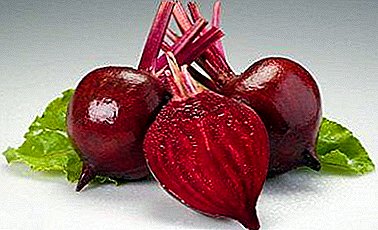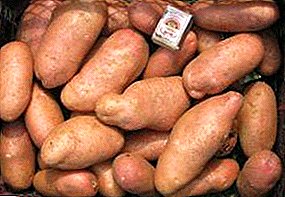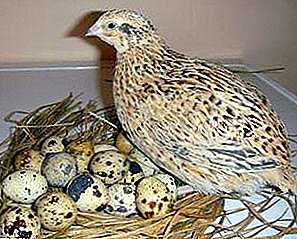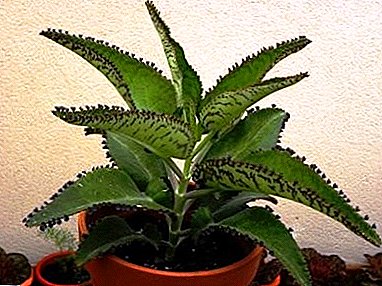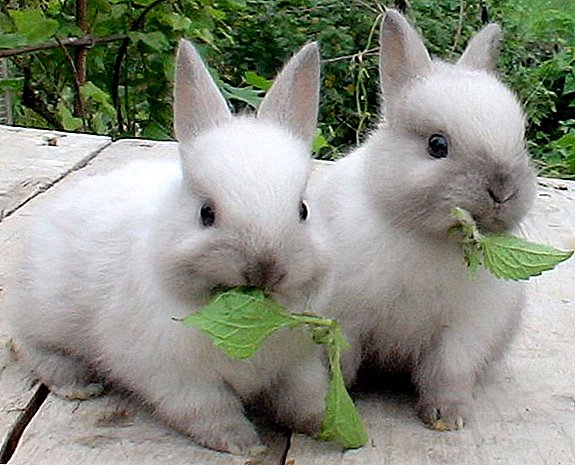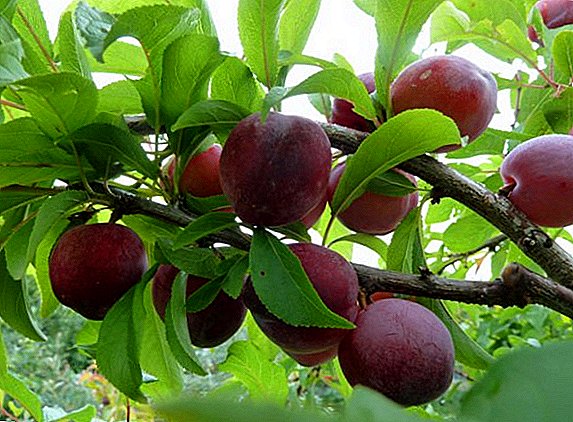 Chinese plum is rarely grown in our gardens, but there are still enthusiasts who try to tame it. After all, it always pleases with juicy and tasty fruits, gives a beautiful and lush bloom, early fruiting. In addition, the types of these plums easily adapt to virtually any geographic conditions, are hardy, resistant to diseases and pests.
Chinese plum is rarely grown in our gardens, but there are still enthusiasts who try to tame it. After all, it always pleases with juicy and tasty fruits, gives a beautiful and lush bloom, early fruiting. In addition, the types of these plums easily adapt to virtually any geographic conditions, are hardy, resistant to diseases and pests.
Characteristic and difference of Chinese plums
Chinese plum, according to the descriptions of the reference books of gardeners, belongs to the genus Prunus L. of the Rosaceae family. This genus includes more than four dozen different types of plums. It is grown as a cultivated plant, but can also be found in the wild. In the latter case, it is easy to find in the expanses of North America, South-West and Western Asia.
Chinese plum is a tree that grows up to 12 m in height. It has a straight trunk, on which are spread branches. The bark of the tree is purple-brown or red-brown. Straight thick shoots are bare, they grow small and medium leaves of elongated shape with a rounded base, a sharp tip and a ribbed edge. Grow up to 12 cm in length and 5 cm in width, have a dark green shiny surface. 
Did you know? The homeland of the plant is considered the Far East and China, from where it has spread to other parts of the world. A plum originating from the Ussurian species, which is able to withstand temperatures down to -50 ° C, has taken root in our strip.
By the nature of flowering and fruiting, Chinese plums have a noticeable difference from home plums. The Chinese equivalent blooms much earlier (in April), rapidly and densely covered with buds. On an annual tree fruits are rare, and for more adults appear on the spur or bouquet sprigs.
White flowers are located in the axils of the leaves, on average, three pieces, bloom before the leaves appear on the tree. With successful pollination fruits abundantly. Conical, heart-shaped or spherical fruits come in various shades: from bright red to yellow. The flesh is juicy, sweet and sour, it grows together with the stone. Some gardeners believe that Chinese plum is inferior in taste to homemade, while others, on the contrary, note its special taste.
Pros and cons of Chinese plums
From the above description can highlight the main advantages of plums. It is covered with color earlier than others, respectively, it begins to bear fruit earlier. Harvest gives abundant. Fruits are attractive in appearance and taste, tolerate transportation. Also, the tree is resistant to diseases and pests. 
Did you know? It is believed that every tenth domestic plum variety comes from Chinese plum.
However, this fruit tree has its drawbacks. Also early flowering can be caught by late frosts, and then you should not count on a good harvest. During flowering, not so many bees and other insects, so pollinating the plum is hard enough. Harvested, though easily transported, but can not be dried. The bark at the root collar often subsides on the bark, which is detrimental to the tree.
Pollination of Chinese plums
As already mentioned, the Chinese plum has difficulty pollinating. Besides the fact that in early spring there are few insects that would pollinate the flowers, so most of the varieties of this tree require a number of pollinators. Plum is best in this role. But if you plant several varieties of Chinese plum nearby, pollination will also occur.
With successful pollination, ovaries appear on almost every flower. Therefore, the fruits literally stick around each branch, growing tightly to each other. 
When and where is better to plant on the site
If you are interested in Chinese plum, we will tell you how to grow a tree in your area. It is necessary to choose for it a place that is well lit and warmed by the sun’s rays, but at the same time is closed from drafts. Therefore, the ideal place would be an open hill. Well, if the tree will be closed from the north side of the wall.
The soil should be gray, clay, forest or chernozem with alkaline or neutral environment. It is important that the soil be rich in calcium.
Important! Groundwater under the planting of Chinese plum must lie at a depth of 1.5 meters or more.
For planting take a sapling at least one year old. And if home plums are planted in the spring, then the Chinese plum requires planting in the fall. Its root system is better adapted to lower temperatures, so over the winter the tree has time to take root and develop roots, and in the spring it directs all the vital juices to the growth and crown formation.
Preparatory work before landing
Place for landing should be prepared for a few days. The territory is dug up with the introduction of 700 g of dolomite flour per square meter into the ground. This will help reduce soil acidity, if necessary. The pit is formed not less than 18 days before disembarkation. Recommended length and width - 70 cm, depth - not less than 60 cm.  On the day of planting, the seedling must be cleaned by removing dried roots and broken branches. Then the roots are immersed in the clay solution for at least an hour. Some gardeners recommend leaving it there for five hours. In the clay, you can add the drug "Epin" to stimulate the growth of a tree or a pale pink solution of potassium permanganate.
On the day of planting, the seedling must be cleaned by removing dried roots and broken branches. Then the roots are immersed in the clay solution for at least an hour. Some gardeners recommend leaving it there for five hours. In the clay, you can add the drug "Epin" to stimulate the growth of a tree or a pale pink solution of potassium permanganate.
If several trees are being prepared for planting, please note that the distance between them should be at least 1.5 meters, and between rows - 2 meters.
Process and landing scheme
The first 20 cm of soil that is removed from the pit are set aside separately - this is the most fertile layer of soil. It is mixed with an equal amount of peat, humus, compost or manure. At the bottom of the pit of the land available there form a mound, into which a peg is inserted 15–20 cm from the center. The peg must protrude from the pit to 70 cm.
It is recommended to add a mixture of 10 liters of manure, 300 g of superphosphates and 50 g of potassium salt to the pit. The seedling is lowered into the hole so that the root neck protrudes 7 cm above the surface. The roots in the pit must be carefully straightened.
Did you know? Chinese plum even with all the rules of agricultural technology lives no more than 25 years.
After this, the pit is filled up to half, the ground is tamped and poured over with a bucket of water. If the ground is badly compacted, voids are formed there, due to which the roots of the plant are dried. After that, the remaining soil is filled up and a hole is formed around the seedling (about 40 cm in diameter). The seedling must be tied to a peg and watered (at least three buckets of water). When moisture is absorbed to prevent its evaporation, it is necessary to pour peat or sawdust about 5 cm high around the tree. The first watering after planting is carried out after about two weeks.
Features care for Chinese plums
Chinese plum, like any other plant, requires certain rules of cultivation.
Soil care
The plant copes well with a short drought, but in spring and summer during periods of intense heat, frequent watering is necessary. Spend it at the rate of a bucket per square meter of the crown projection. 
Important! It is necessary to monitor the state of the root collar of a young tree, since in the middle band it can peel, which is why the tree dies. To prevent trouble, a 40 cm high hill is formed around the trunk, especially if it is planted on heavy soils or lowlands..
After watering, it is recommended to loosen the soil to a depth of 5 cm. Do not forget about mulching the tree trunk with wood chips, compost or peat in a layer of about 8 to 12 cm.
Top dressing
In the spring, when the plant begins to actively develop, nitrogen fertilizers are applied to help the tree form new shoots. It is recommended to take 25 g of ammonium nitrate, the same amount of urea and two kilograms of mullein per square meter. All this is bred in a bucket of water, and this is how the plant is watered.
In the summer, the tree is fed several times with a mixture of ash (200 g per square meter), potassium (20 g) and phosphorus (60 g). At the beginning of autumn it is recommended to add 15 - 20 g of nitroammofoski.
Trimming rules
Chinese plum requires periodic pruning. The first is carried out immediately after planting, when the seedling is shortened to about half its growth. This helps the tree to get used to new conditions faster and actively develop new shoots. Then, in winter and early spring, the drying branches are cut off. In the southern regions pruning can be done in the fall.
Important! In winter, you can prune only in cases where the air temperature is not lower than 15 ° C.
It is also recommended in the spring to carry out the forming pruning. Immediately after the last frost, shoots that grow upward and those that thicken the crown are removed. After that, the shoots of the last year are half shortened.
Do not forget to use sharp and disinfected tools for pruning, and trim the trimmed places with a garden pitch.
Wintering plums
On the eve of winter, it is necessary to collect all the fallen leaves around the foliage, remove it from the site and burn it. Pristvolnye circles need to dig.
An adult tree easily tolerates winter without shelter, but young trees at the age of 2-3 years should be tied with sackcloth or lapnik in two layers. Do not use synthetic materials for this, as the plant will disappear under them.
Possible diseases and pests of Chinese plums
The advantage of a tree is that it is resistant to diseases that fruit trees often suffer from. But still, sometimes Chinese plum amazes as much as monocleosis or asperiasis. For the treatment and prevention of wood treated with 3% solution Bordeaux mixture. As a prophylactic treatment is carried out before the flowering of the tree.  Of the pests, the danger is the plum fruit mill, which destroys the leaves of the tree and spoils the fruit. To prevent its occurrence, during the flowering period, the tree is sprayed with special chemicals every two weeks, stopping a month before harvesting. Pheramon traps are also effective.
Of the pests, the danger is the plum fruit mill, which destroys the leaves of the tree and spoils the fruit. To prevent its occurrence, during the flowering period, the tree is sprayed with special chemicals every two weeks, stopping a month before harvesting. Pheramon traps are also effective.
Chinese plum is a good alternative to regular home plums. Its fruits are large, juicy and ripen much earlier than usual. Caring for it is almost the same as for the usual plum, so the difficulties with the cultivation will not arise. Although it has its drawbacks: the likelihood of flowers freezing during the last frosts, difficulties with pollination. But if you follow all the tips for the care of the Chinese plum, you will find a tasty and bountiful harvest.


